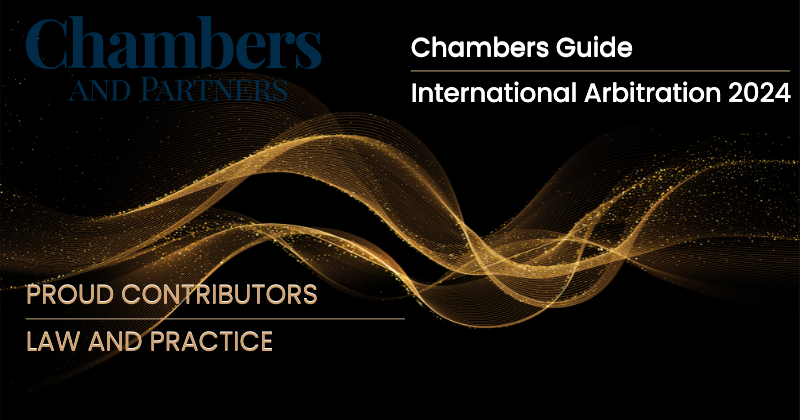For a long time, the only recognised outcome for insolvent and distressed companies in Kenya was winding up and in rare cases, receivership. However, the Insolvency Act, 2015 (the Insolvency Act) ushered a move away from these draconian outcomes and introduced the concept of rescue procedures.
To this end, the Insolvency Act has placed emphasis on maintaining companies as going concerns for the benefit of all concerned through various rescue procedures including but not limited to company voluntary arrangements, administration, and administrative receivership.
Administration
Administration commences with the appointment of an administrator who may be appointed by the company or its directors, the Court, or the holder of a floating charge. The objectives of administration are to maintain the company as a going concern, to obtain a better outcome for the company’s creditors than would be if the company was liquidated, and to realize the property of the company so as to distribute the same to secured or preferential creditors.
Once an administrator is appointed, a moratorium comes into play. During the existence of the moratorium, proceedings and execution against the company are stopped and creditors may only exercise their rights against the company with the consent of the Court or administrator.
The main difference between an administrator and an administrative receiver is that the latter is available to a debenture holder in respect of a debenture that was created before the coming into force of the Insolvency Act. However, the roles and obligations of an administrative receiver are, in essence, no different from an administrator appointed under the Insolvency Act since he or she is required to be a qualified insolvency practitioner, a designation with specific obligations under the Insolvency Act.
The main attraction of administration is the protection it affords a company by deflecting any liquidation attempts by creditors. This gives the company time to turn around its financial affairs. On the flipside, administration bears some downsides such as the ceding of controlling rights over the company from the directors to an insolvency practitioner. In addition, being a public process, administration is in the public domain and this may act to deter suppliers, affect investor confidence, and reduce employee morale.
Company Voluntary Arrangement
A company voluntary arrangement (CVA) is, on the other hand, a scheme where the company’s directors propose a plan to settle the debts of the creditors. If the plan is approved, the company will continue trading on a more flexible repayment schedule. A CVA is usually managed by an insolvency practitioner who is either selected by the directors and confirmed by the creditors or appointed directly by the creditors. Once a CVA is approved, a moratorium comes into place and prevents any debt recovery proceedings or action against the company unless with the approval of the Court.
Unlike administration, CVA’s are rarely in the public domain and as such, the process enjoys some privacy. Moreover, due to the informality of the process, it gives greater latitude to stakeholders to come up with ideal solutions tailored specifically to the difficulties facing the company. Of note is that since CVA’s are largely controlled by creditors, unless most of the creditors approve the process and for the duration of it, it may well collapse should the creditors not fully buy into the process.
Corporate Restructuring
The Companies Act, 2015 (the Companies Act) also contains rescue procedures such as compromises, arrangements, reconstructions, and amalgamations, all of which permit a company that is in distress to initiate negotiations with its creditors to obtain a favourable outcome for all concerned parties.
The umbrella term for the above processes is corporate restructuring which may be commenced by a company, its directors, members, creditors, and insolvency practitioners. There are no defined parameters for corporate restructuring and it may include reorganization of a company’s shares, an amalgamation of two or more companies, compromises with creditors, or any act that alters the company’s financial position.
A restructuring takes effect once approved by the Court and the stakeholders in a meeting. It comes with several advantages as the arrangement is predicated on making the business more profitable with the idea of obtaining a positive result for the creditors.
Corporate restructuring is generally a good response for a company with a declining business as it helps revive it thereby increasing the value of the company. However, if not done properly, a restructuring may result in increased losses being incurred by the company due to substantial costs and expenses attendant to the restructuring process such as consultation fees, professional fees and legal compliance costs.
As highlighted above, companies in distress in Kenya have a range of options available to them under both the Insolvency Act and the Companies Act which, when properly applied, can improve the financial position of the company and delay, or avoid liquidation altogether.
The Courts in Kenya have also been supportive of rescue arrangements and have been reluctant to interfere with entities that are pursuing corporate rescue procedures. Prominently, there was an attempt by some creditors to stop the debt restructuring that had been commenced in respect of Kenya Airways in 2017 in the case Equity Bank Kenya Limited v Kenya Airways PLC & 11 others (2017) eKLR. The applicants argued that there were no legal provisions that permitted the restructuring process that was happening at the time.
The Court, however, in rejecting this position, stated that the said restructuring was undertaken pursuant to section 926 of the Companies Act, which permits companies to enter such arrangements, and pronounced itself as follows:
“It is common ground that the 1st respondent is in the process of restructuring in an effort to secure additional capital that will see it continue as a going concern. The Companies Act provides a mechanism under which a company may enter into a scheme of arrangement with its creditors. Under section 926 of the Act, a company may present a compromise or arrangement to the Court for sanction where a majority of the creditors, or the members voting at a meeting, convened in accordance with section 923 have agreed with the compromise or arrangement.”
Under the said provision of the law, companies experiencing financial difficulties may opt to enter any arrangement that will help alleviate their financial situation and these may include ceding entitlements by creditors, trading reorganization, use of derivatives (where applicable), debt to equity swaps, share capital restructuring, mergers and acquisitions and halting proceedings against the company.
Conclusion
A distressed company should act early to avoid going into liquidation. Whereas there is a wide range of options available to a company in distress, these options may be limited if an insolvency situation is left unaddressed rather than dealt with immediately. Some of the subtle signs of impending insolvency that companies can look out for include cases where the business is expanding too fast, missing forecast targets consistently, entry of competition into the market amongst others.
Finally, it is important to note that a selected statutory rescue procedure can only achieve its intended goal if the relevant stakeholders are involved and cooperate. These stakeholders include financiers, suppliers, employees and landlords who must lend support to the selected rescue procedure for the same to be successfully implemented.





